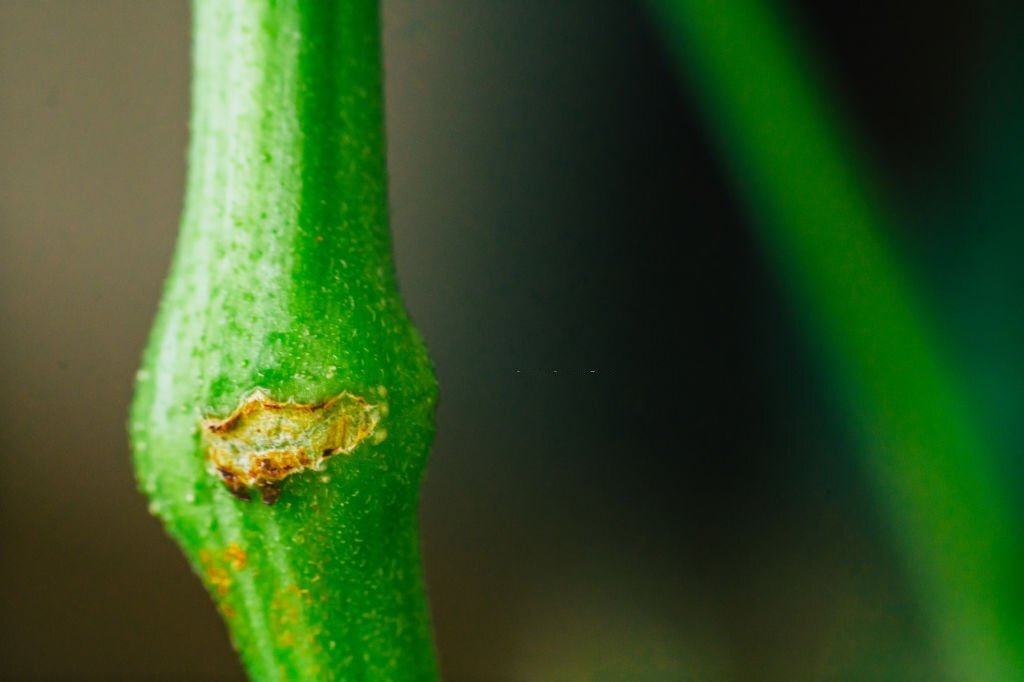🔥 Website for Sale - Contact Us
In this comprehensive guide, we’ll dive into the world of super cropping – a high-stress training method that manipulates the plant’s structure to produce stronger plants with potentially higher yields. I’ll walk you through the benefits of super cropping and different strategies you can use to bolster your cannabis plants.
We’ll explore the fundamentals of super cropping, its numerous benefits, and how it can lead to healthier, more productive cannabis plants. I’ll share various techniques and tips to help you successfully implement this method in your cannabis garden. Plus, we’ll tackle common mistakes and misconceptions associated with super cropping and provide guidance on how to avoid these pitfalls. So, let’s dive in!
II. What is Super Cropping?
A. Definition and explanation
Super cropping is a high-stress training (HST) technique that involves strategically bending and pinching the branches of your cannabis plants. The primary goal of super cropping is to manipulate the plant’s structure, optimizing light exposure and nutrient distribution, which ultimately leads to stronger plants and potentially higher yields.
When you super crop a plant, you’re essentially creating minor, controlled damage to the plant tissue. This damage sends a signal to the plant, which then responds by strengthening its internal support system. The result? A sturdier, more resilient plant that can support larger, denser buds!
Another bonus of super cropping is the creation of more bud sites. By bending and pinching the branches, you’re redistributing the plant’s growth hormones, encouraging the development of new branches and bud sites. This means you’ll have more buds on your plants, which translates to a more substantial harvest.
So, in a nutshell, super cropping is all about strategically stressing your cannabis plants to make them more vigorous, and productive.
B. Benefits of super cropping
Enhanced Light Exposure: Super cropping helps create a more uniform and even canopy, which allows for better light distribution among your cannabis plants.
Increased Bud Sites: As mentioned earlier, super cropping redistributes the plant’s growth hormones, encouraging the development of new branches and bud sites. The result is more buds on your plants and a more substantial harvest.
Stronger Branches: The process of bending and pinching branches during super cropping triggers a response in the plant, causing it to strengthen its internal support system. This results in sturdier branches that can support heavier, denser buds without breaking.
Improved Plant Health: By manipulating the plant’s structure, super cropping promotes better nutrient distribution throughout the plant, leading to improved overall health and vigor.
Higher Yields: When done correctly, super cropping can significantly boost your cannabis harvest.
C. Can I Super Crop with the Sea of Green Method?
Super cropping and the Sea of Green (SOG) method can go hand-in-hand, complementing each other to create a robust and high-yielding cannabis garden.
For those of you who might not be familiar with the Sea of Green method, let me give you a quick rundown. The SOG technique involves growing a larger number of smaller cannabis plants in close proximity, maximizing space utilization, and shortening the vegetative phase to speed up harvest times. The primary goal of SOG is to create a uniform canopy of buds, which leads to optimal light distribution and maximizes yield per square foot.
Now, back to super cropping. When you super crop cannabis plants, you’re manipulating their structure to create a more even canopy. This fits perfectly with the SOG method, as it helps maintain an even height among the plants, ensuring they all receive equal light exposure. By combining super cropping with the SOG method, you’re able to further optimize light distribution and create a thriving cannabis garden that produces a bountiful harvest.
III. Selecting the Right Cannabis Strains for Super Cropping
A. Indica vs. Sativa strains
When it comes to super cropping, it’s crucial to select cannabis strains that respond well to this high-stress training technique. Let’s look into the differences between Indica and Sativa strains and how they impact super cropping.
Indica Strains: Indica strains typically have a shorter, bushier growth structure, which makes them well-suited for super cropping. Their naturally thick stems and sturdy branches can handle the bending and pinching associated with this technique. As a result, Indica strains often respond well to super cropping, showcasing improved growth patterns, stronger branches, and increased yields. Some popular Indica strains for super cropping include Northern Lights, Blueberry, and Granddaddy Purple.
Sativa Strains: Sativa strains, on the other hand, tend to grow taller and have thinner, more flexible stems. While this makes them less ideal for super cropping compared to Indica strains, they can still benefit from the technique when handled carefully. The key with Sativa strains is to ensure you don’t bend or pinch too aggressively, as their more delicate structure can be more susceptible to damage. Some popular Sativa strains for super cropping include Amnesia Haze, Jack Herer, and Sour Diesel.
It’s important to note that the success of super cropping is not solely dependent on whether a strain is Indica or Sativa. Factors such as the plant’s age, overall health, and environmental conditions can also impact how well a strain responds to super cropping.
In the next section, we’ll explore hybrid strains and their potential for super cropping.
B. Hybrid Strains and Their Potential
Hybrid strains, which are a combination of Indica and Sativa genetics, can offer the best of both worlds when it comes to super cropping. These strains often inherit the favorable characteristics of both Indica and Sativa plants, making them well-equipped to handle the stress of super cropping.
Balanced Growth Characteristics: Hybrid strains often display a mix of growth characteristics from their Indica and Sativa parentage. This balance can result in plants with moderately tall stature, intermediate internode spacing, and sturdy branches, making them well-suited for super cropping. The combination of Indica and Sativa traits may enhance the plant’s ability to recover after the stress of super cropping.
Adaptability: Many hybrid strains are bred to be adaptable to various growing conditions, making them more resilient and able to bounce back from stress more effectively. This adaptability can be particularly beneficial when implementing high-stress training techniques like super cropping, as the plants are better equipped to recover and continue growing.
Versatility: Hybrid strains can offer a wide range of growth patterns, flavors, and effects, providing growers with a versatile selection of plants to super crop. With hybrids, you can experiment and find the perfect combination of traits to achieve the desired results in your cannabis garden.
Increased Yield Potential: Since hybrid strains often inherit the positive growth traits of both Indica and Sativa plants, they may have a higher yield potential when subjected to super cropping. Some popular hybrid strains for super cropping include Gorilla Glue #4, Girl Scout Cookies, and White Widow.
C. Factors to Consider When Choosing Strains
While Indica, Sativa, and hybrid strains all offer unique growth characteristics, there are additional factors to consider when selecting strains for super cropping. Here are factors to keep in mind:
Growth Habit: Look for strains that naturally exhibit a sturdy growth structure, with thick stems and strong branches. These characteristics make the plants more resilient and able to withstand the stress of super cropping without sustaining significant damage.
Stress Resistance: Some strains are more resistant to stress than others. Opt for strains with a proven track record of bouncing back after high-stress training techniques like super cropping.
Genetic Stability: Choose strains with stable genetics, as they are more likely to display consistent growth patterns and respond well to super cropping. Unstable genetics can result in unpredictable growth and less reliable results when high-stress training.
Grower Experience: If you’re new to cannabis cultivation or high-stress training techniques, consider starting with more forgiving strains that are known for their resilience and adaptability. As you gain experience and confidence, you can experiment with more challenging strains.
Personal Preferences: Don’t forget to factor in your personal preferences for taste, aroma, and effects when selecting strains for super cropping. Ultimately, you’ll want to grow strains that you enjoy consuming and sharing with others.
IV. Super Cropping Techniques
A. Softening the Stem
The initial step in the super cropping process is to soften the stem. This ensures that the stem becomes pliable and less likely to break when bent. Follow this step-by-step guide for softening the stem.
Identify the Branch: Begin by selecting a healthy branch in the vegetative stage, as the stems will be more flexible and easier to work with at this stage.
Choose the Location: Decide on the part of the stem where you want to apply the super cropping technique. Aim for a few inches below the top of the branch, where the stem remains relatively thick and sturdy.
Clean Your Hands: Prior to handling your plants, always wash and sanitize your hands to prevent disease.
Softening Process: Gently pinch the stem between your thumb and index finger, applying consistent pressure along the stem’s length. Gradually roll the stem between your fingers, feeling the fibers within the stem break down and become more pliable.
Test for Pliability: Once the stem appears more pliable, carefully bend it to a 90-degree angle to assess its flexibility. If it still resists bending, continue to gently pinch and roll the stem between your fingers until it becomes more malleable.
By following these steps, you’ll effectively prepare the stem for the super cropping process, ensuring it can be bent without snapping and resulting in a stronger, more resilient cannabis plant.
B. Pinching and Bending
After successfully softening the stem, the next step in the super cropping process is to pinch and bend the stem to achieve the desired shape and promote even canopy growth.
Recheck the Pliability: Test if it is still pliable by gently pressing it between your fingers. If it feels stiff, repeat the softening process until it is malleable enough to bend without breaking.
Pinch the Stem: Place your thumb and index finger on opposite sides of the softened stem, applying gentle but firm pressure. The goal is to slightly flatten the stem without crushing it completely.
Bend the Stem: Carefully bend the stem to a 45-90 degree angle, depending on your desired outcome and plant growth pattern.
Support the Bend: To prevent the bent stem from snapping back into place, use plant ties, soft wire, or string to support the newly bent stem. Secure the support system to the main stem and a nearby branch or stake, ensuring the bent stem maintains its new position.
Monitor the Recovery: The super cropped stem over the next few days should thicken and strengthen around the bend as it heals.
By carefully pinching and bending the stem, you can effectively manipulate the plant’s growth pattern, creating a more even canopy and stronger branches.
C. Supporting Branches After Bending
Once you have successfully bent the stem, it’s crucial to provide proper support to the branches to ensure they maintain their new position and heal effectively. Here’s a step-by-step guide to supporting branches after bending during the super cropping process.
Choose the Right Support Material: Select a suitable support material, such as plant ties, soft wire, or string, that will not damage or cut into the plant as it grows. The material should be gentle on the plant but strong enough to hold the bent stem in place.
Assess the Support Needs: Examine the plant to determine which branches need extra support following the bending process. In most cases, you will need to support the main bent stem and possibly any additional branches affected by the bend.
Attach the Support: Carefully attach the support material to the main bent stem, ensuring that it is secure but not too tight, as this could restrict growth and damage the plant. Make sure the support is holding the stem in the desired position to promote even growth and light distribution.
Anchor the Support: Secure the other end of the support material to a nearby branch, stake, or the plant’s main stem. This will help maintain the bent stem’s new position and provide additional stability to the plant’s structure.
Monitor and Adjust: Regularly check the supported branches to ensure they are healing properly and maintaining their new position. As the plant grows, you may need to adjust the support system to accommodate the plant’s changing size and shape.
Gradual Removal: Once the plant has healed and the bent stem has thickened and strengthened, you can gradually remove the support system. However, take care not to remove it too soon, as this could cause the stem to revert to its original position or weaken the plant’s structure.
By providing the necessary support to the branches after bending, you can help your cannabis plant recover and maintain its new shape.
D. Timing and Frequency
The success of super cropping relies on proper timing and frequency. Implementing this technique at the right stage of growth and with the correct frequency ensures optimal results and minimizes the risk of damaging your cannabis plants. Here are guidelines for timing and frequency in the super cropping process.
Vegetative Stage: Super cropping should be performed during the vegetative stage of growth, typically a few weeks before switching to the flowering phase. This allows the plants enough time to recover and establish a stronger, more resilient structure before entering the crucial flowering stage.
Monitor Plant Growth: Keep a close eye on your plant’s growth to determine when it’s appropriate to super crop. Look for signs of vigorous growth, such as strong, sturdy stems and healthy leaves. Super cropping during periods of strong growth will allow the plant to recover more quickly from the stress and maximize the benefits of the technique.
Avoid Late Flowering Stage: Do not perform super cropping during the late flowering stage, as the plants will be less resilient and more focused on producing buds. Super cropping at this stage can cause damage and negatively impact the overall yield.
Frequency: Super cropping can be done as needed to achieve the desired canopy structure and promote even growth. Allow ample time for recovery between super cropping sessions, and focus on one or two main branches at a time.
Adapt to Individual Strains: Remember that different strains may require different super cropping schedules. Observe your plant’s responses to super cropping and adjust the timing and frequency accordingly to ensure the best possible results.
By carefully considering the timing and frequency of super cropping, you can effectively improve your cannabis plant’s structure, strength, and overall health. This high-stress training technique, when applied correctly, can lead to a more even canopy, better light exposure, and ultimately, a higher yield in your cannabis garden.
E. Common Questions with Short Answers:
-
What is super cropping?
Super cropping is a high-stress training technique used in cannabis cultivation to increase plant strength, improve overall health, and boost yields by manipulating the plant’s structure and growth patterns.
-
Why is super cropping important for cannabis cultivation?
Super cropping encourages the growth of more robust and vigorous plants by optimizing the plant’s structure, increasing light exposure, and promoting the development of larger, denser buds, ultimately leading to higher yields.
-
Can all cannabis strains be super cropped?
While most cannabis strains can be super cropped, some strains may respond better to the technique than others. It is essential to research and select strains that are known to respond well to super cropping for the best results.
-
When is the best time to start super cropping cannabis plants?
The best time to start super cropping is during the vegetative stage of the plant’s growth, typically 3-4 weeks after germination, when the plant has developed multiple branching sites and a sturdy stem.
-
How often should I super crop my cannabis plants?
Super cropping should be done as needed throughout the plant’s growth, taking care not to over-stress the plant. Allow sufficient recovery time between super cropping sessions to prevent damage and ensure healthy growth.
-
Can super cropping be combined with other high-stress training techniques?
Yes, super cropping can be combined with other high-stress training techniques, such as topping, lollipopping, and mainlining, to further optimize plant structure and increase yield potential. However, it is crucial to monitor the plant’s health and stress levels to avoid over-stressing and potential damage.
V. Tips for Successful Super Cropping
To ensure that your super cropping efforts are successful and yield the desired results, follow these helpful tips:
Be Gentle: Super cropping is a high-stress training technique, but it’s essential to be gentle while handling the plant. Avoid applying excessive pressure or force when pinching and bending the stem, as this could cause permanent damage.
Start Early: Begin super cropping during the vegetative stage of growth, allowing the plants enough time to recover before entering the flowering stage. Early super cropping will help establish a strong, resilient structure that can withstand the demands of the flowering phase.
Pay Attention to Plant Health: Only super crop healthy, vigorous plants. Attempting to super crop weak or unhealthy plants may cause further stress and damage, potentially hindering their growth and overall health.
Select the Right Strains: Some strains are better suited for super cropping than others. Research and choose strains with sturdy growth habits, stress resistance, and stable genetics to ensure the best results.
Provide Adequate Support: Properly support bent stems and branches after super cropping to maintain their new position and help the plant recover. Use gentle, strong materials like plant ties, soft wire, or string to avoid causing damage to the plant.
Monitor Recovery: Keep a close eye on the super cropped plants during the recovery process. Look for signs of healing, such as thickening and strengthening around the bent area. If you notice any issues, address them promptly to prevent long-term damage.
Customize Your Approach: Recognize that each cannabis strain and the individual plant may require a unique approach to super cropping. Pay attention to how your plants respond to the technique and adjust your methods accordingly for optimal results.
By following these tips and guidelines, you can maximize the benefits of super cropping and help your cannabis plants thrive. With careful attention to detail and proper technique, super cropping can lead to a more even canopy, improved light exposure, and a higher overall yield in your cannabis garden.
VI. Common Super Cropping Mistakes and How to Avoid Them
Super cropping can be an effective technique to improve your cannabis plants’ growth and yield, but it’s crucial to avoid common mistakes that could lead to damage or diminished results. Here are some common super cropping mistakes to avoid:
Super Cropping Too Late: Super cropping during the late flowering stage can cause extra stress and damage to the plants. Instead, focus on super cropping during the vegetative stage, allowing enough time for recovery before the flowering phase.
How to Avoid: Begin super cropping a few weeks before switching to the flowering stage, and avoid super cropping during the late flowering stage.
Overdoing It: Excessive super cropping can cause undue stress and damage to the plants. Over-stressing the plants can hinder growth and negatively impact the overall yield.
How to Avoid: Super crop one or two main branches at a time, allowing ample time for recovery between sessions. Carefully observe your plant’s responses and adapt your super cropping schedule accordingly.
Not Providing Adequate Support: Failing to properly support bent stems and branches can result in the plant reverting to its original position or experiencing structural weakness.
How to Avoid: Use gentle yet strong support materials, such as plant ties, soft wire, or string, to secure bent stems and branches in their new position. Regularly check and adjust the support system as the plant grows.
Damaging the Stem: Applying too much pressure or force when pinching and bending the stem can cause irreparable damage and hinder the plant’s growth.
How to Avoid: Be gentle when pinching and bending the stem. Apply even pressure and avoid crushing the stem completely. If you accidentally damage a stem, provide additional support and care to help the plant recover.
Super Cropping Unhealthy Plants: Super cropping weak or unhealthy plants can exacerbate existing issues and further stress the plants.
How to Avoid: Only super crop healthy, vigorous plants. If you notice any signs of illness or weakness in your plants, address these issues before attempting to super crop.
By being aware of these common mistakes and taking steps to avoid them, you can ensure a successful super cropping experience. Proper technique, timing, and care will help your cannabis plants develop a strong, resilient structure, leading to improved growth.
VII. Super Cropping and Other High-Stress Training Techniques
Super cropping is just one of several high-stress training techniques that can be used to improve cannabis plant growth, structure, and yield. Here’s a brief overview of super cropping and other popular high-stress training techniques:
Super Cropping: As we’ve discussed, super cropping involves pinching and bending the stems to create a more even canopy, increase light exposure, and promote stronger, more resilient plant growth. By softening the stem and bending it gently, super cropping encourages the plant to recover and develop a more robust structure.
Topping: Topping is the process of cutting off the main growing tip of the plant, which encourages the growth of multiple colas (flowering sites) instead of a single main cola. This results in a bushier plant with more potential for bud production. Topping should be done during the vegetative stage and can be combined with super cropping for even better results.
Fimming: Similar to topping, fimming involves cutting off a portion of the main growing tip but leaving a small part of it intact. This technique promotes the growth of multiple colas and a bushier plant structure. Fimming is typically less stressful on the plant than topping and can be used in combination with super cropping.
Low-Stress Training (LST): While not a high-stress technique, LST involves bending and securing the branches to create a more even canopy and increase light exposure without cutting or damaging the plant. LST can be used alongside super cropping to further enhance the plant’s structure and optimize growth.
Mainlining: Mainlining, also known as manifold training, is a technique that involves topping the plant multiple times to create a symmetrical, manifold structure with an even distribution of colas. This method encourages efficient nutrient and energy distribution throughout the plant, resulting in an even canopy. Mainlining can be combined with super cropping for a more effective high-stress training regimen.
To help you better understand, here is an article about Topping vs Fimming. By understanding and incorporating these high-stress training techniques, you can customize your cannabis plant training approach to achieve optimal growth, structure, and yield. Combining super cropping with other methods such as topping, fimming, or mainlining can enhance the benefits and produce healthier, more productive cannabis plants in your garden.
VIII. Conclusion
Super cropping is an effective high-stress training technique that can greatly benefit your cannabis plants by creating a more even canopy, increasing light exposure, and promoting a stronger, more resilient structure. By carefully following the proper super cropping methods and avoiding common mistakes, you can maximize cannabis potential.
Combining super cropping with other high-stress training techniques like topping, fimming, and mainlining can further enhance the benefits and lead to even better results. Remember that each cannabis strain requires a unique approach to super cropping, so pay attention to how your plants respond and adjust your techniques accordingly for optimal results.
Incorporating super cropping and other high-stress training techniques into your cannabis cultivation routine can significantly improve your plants’ growth, structure, and overall yield.





